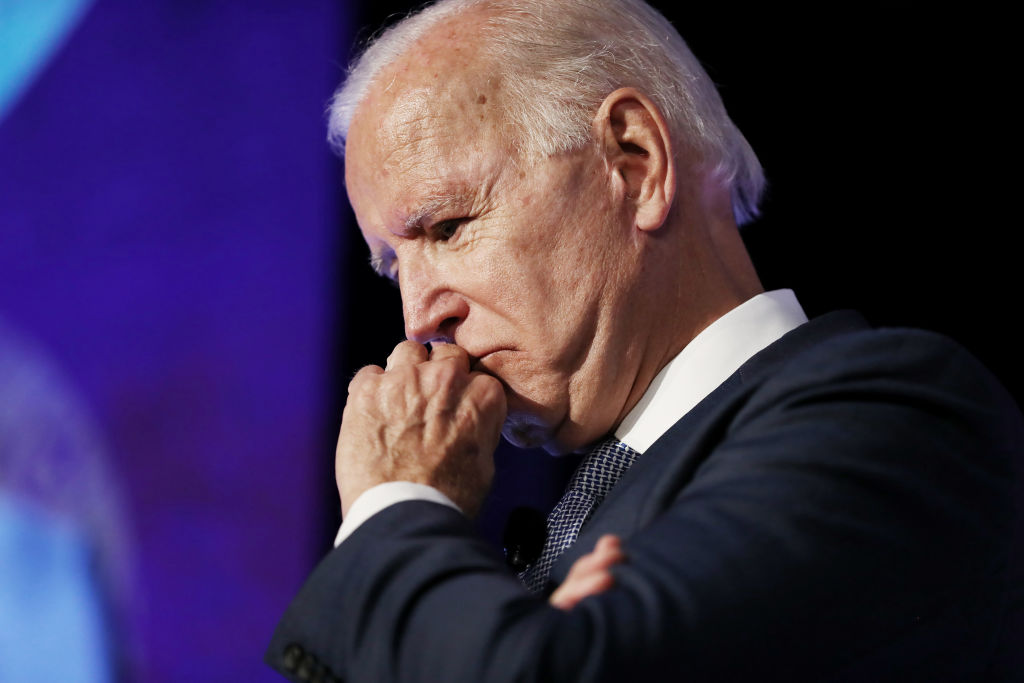President Joe Biden has made it clear he’s taking a different tack than the administration of former President Donald Trump when it comes to North Korea: No big moves, but they want Pyongyang to sit down at the table and start talking nuclear disarmament.
“If there was a commitment on which we met, then I would meet with [Kim],” Biden said during a joint news conference with South Korean President Moon Jae-in in May, according to CNBC. “And the commitment has to be that there is discussion about his nuclear arsenal.”
Meanwhile in August, the U.S. special envoy for North Korea, Sung Kim, told the Kim regime that they were willing — and, from the sounds of things, even eager — to meet about North Korean denuclearization, according to The Associated Press.
“I continue to stand ready to meet with my North Korean counterpart at anywhere and at any time,” Sung Kim said.
The North Korean regime hasn’t saved the date. Far from it, actually: The hermit despotism has ratcheted up military pressure in response — including a Tuesday test of what appeared to be a ballistic missile aimed into the East Sea off the coast of Japan.
According to The Hill, details weren’t immediately available.
“The intelligence authorities of South Korea and the United States are currently conducting a thorough analysis regarding additional details on the missile,” the Joint Chiefs of Staff said in a text message to reporters, according to the Korea Herald.
However, the Herald reported the projectile appeared to be a submarine-launched ballistic missile originating from Sinpo, where North Korea’s submarines are based.
The Japan Times, meanwhile, characterized it as part of North Korea’s “frenetic pace of weapons tests” and noted the U.S. Indo-Pacific Command called it a “North Korean ballistic missile launch” and said the Kim regime should halt “further destabilizing acts.”
The paper also reported there had been two launches, not one — although both had fallen outside of Japan’s exclusive economic zone, which encompasses the area 200 nautical miles from its shores.
This “frenetic pace” includes the test of a hypersonic missile in September, according to Bloomberg. It was one of three new weapons systems the country tested. The hypersonic missiles were the most worrying, given that they could likely evade American defenses.
After the test of an anti-aircraft missile in September, Kim Jong-un said the Biden administration’s nuclear dialogue proposal was a “petty trick” and the United States represented a “fundamental danger” to the world.
In terms of Tuesday’s test, the splashdown point sent an unmistakable message to another U.S. ally in the region, Japan, which is preparing for crucial elections Oct. 31.
Prime Minister Fumio Kishida canceled campaign events for the day and returned to Tokyo to helm the response to the test.
“North Korea’s remarkable nuclear and missile technology development is something we cannot overlook,” he would tell reporters later in the day, according to the Japan Times.
“Amid this situation, I’ve already given instructions to revise our country’s National Security Strategy, including considering the option of acquiring the capability to strike enemy bases.”
The launch also came as the United States hosted talks with the top nuclear envoys from Japan and South Korea, during which Sung Kim reiterated the United States has “no hostile intent” toward and was “prepared to work cooperatively with” North Korea on humanitarian issues, the Japan Times reported.
“We will seek diplomacy with the DPRK to make tangible progress that increases the security of the United States and our allies,” Kim said, according to the Japan Times. “This includes considering potential engagement with the DPRK to reduce tensions.”
My guess is the answer toward that is a hard no. We’ll know more tomorrow; the Japan Times reported North Korea typically releases official details surrounding its tests one day after they take place.
However, this could be another breakthrough in North Korea’s missile technology — and that would be a huge blow to the Biden administration’s policy toward North Korea, particularly coming so soon after the disastrous withdrawal in Afghanistan.
There are two certainties, however, one following the other.
The first is that North Korea isn’t coming back to the table at the moment the Biden administration plans to get them to sit down. As the United States and its allies are meeting in Washington, D.C., to talk about how to denuclearize North Korea, North Korea is responding with a missile or two.
I’d say that’s not a good sign.
The second is that North Korea isn’t going away. The Biden administration may not want to engage with Pyongyang the way former President Donald Trump did. Pyongyang, however, wants to engage in the world the same way they used to — and that’s becoming ever more dangerous.
Yet again, it seems, Biden’s talk-tough rhetoric has come up against reality — and reality is winning.
This article appeared originally on The Western Journal.

























 Continue with Google
Continue with Google